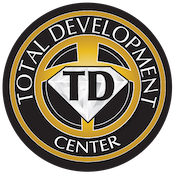From Rut to Renaissance: Proven Steps for Reinvigorating Your Career

A journey of career transition requires a bold acknowledgment: change is not the enemy; it’s the gateway to growth. Picture this as your invitation to a career metamorphosis. By embracing change, you’re not just navigating your career; you’re crafting it, shaping it into a meaningful narrative that aligns with your evolving values and aspirations. In this article, we’ll unravel the secrets to transform your career narrative—from stagnation to excitement, from feeling stuck to being unleashed.
Recognizing the Signs of Feeling Stuck
Have you ever found yourself dragging your feet to work, feeling a sense of monotony that extends beyond the usual Monday blues? These might be signs you’re need a career transition. The signs can manifest in various ways: a lack of enthusiasm, a feeling of being unchallenged, or even a persistent sense that you’re not living up to your potential.
The Emotional Toll
Prolonged dissatisfaction in your professional life can take a toll on your overall well-being. It’s not just about the hours spent at work, it’s about how those hours make you feel. Unhappiness in your career can seep into other aspects of your life, affecting your relationships, mental health, and overall sense of fulfillment.
Concrete Indicators
Concrete indicators of feeling stuck can include a lack of motivation, a feeling of being overlooked or unappreciated, or a sense that your employer underutilizes your skills. Take a moment to reflect on your recent work experiences. Are you excited about what you do, or has the spark dimmed? Understanding these signs is the first step to a meaningful career transition.
Reflecting on Personal Values & Passions
Feeling stuck often stems from a misalignment between your professional life and your core values and passions. It’s time to embark on a journey of self-discovery. What truly matters to you? What activities make you lose track of time because you enjoy them so much? These are the clues that can lead you to a more fulfilling career.
The Power of Alignment
Your career should not be a detached aspect of your life; it should be an expression of who you are. Take a moment to reflect on your values. What principles guide your life? What aspects of your current or past roles have resonated with your inner self? Mastering this alignment is crucial for escaping the feeling of being trapped and achieving a successful career transition.
Identifying Core Values
Grab a journal or open a blank document and start jotting down your core values. These could include integrity, creativity, collaboration, or autonomy. Be honest with yourself; these values are your compass, and aligning your career with them is a powerful step toward fulfillment.
Uncovering Passions
Beyond values, consider your passions. What activities bring you joy, and how can you incorporate them into your professional life? Sometimes, a seemingly unconventional passion can become the driving force behind a remarkably satisfying career.
As you reflect on your values and passions, you’re laying the foundation for a career that not only pays the bills but also brings you a sense of purpose and satisfaction.
Setting Clear & Achievable Goals
Now that you’ve reflected on your values and passions, it’s time to translate those insights into clear and achievable goals. Goals serve as the roadmap to your desired destination, helping you navigate from feeling stuck to moving purposefully toward a more fulfilling career.
The Power of Goals
Goals inject purpose into your professional journey. They transform vague desires into tangible milestones. When setting goals, consider both short-term objectives and long-term aspirations. Short-term goals provide the stepping stones, while long-term goals paint the picture of the career you envision.
SMART Goals
Familiarize yourself with the SMART criteria for goal setting — Specific, Measurable, Achievable, Relevant, and Time-bound. Specificity adds clarity to your goals, measurability allows you to track progress, achievability keeps them within reach, relevance aligns them with your values, and setting deadlines adds a sense of urgency.
Example Goals:
- Short-Term: Complete a relevant online course within the next three months to enhance a specific skill.
- Medium-Term: Attend at least two networking events in the next six months to expand professional connections.
- Long-Term: Explore a career transition to a role that aligns more closely with your passions within the next two years.
Breaking Down Goals
Sometimes, the path to achieving a larger goal can feel overwhelming. Break it down into smaller, more manageable steps. This not only makes the journey less daunting but also allows you to celebrate victories along the way. By setting clear and achievable goals, you’re not just dreaming about change; you’re actively working toward it.
Exploring New Opportunities & Learning Paths
Setting goals is the first stride. Let’s also talk about the steps you can take to explore new opportunities and learning paths. Embracing change often involves stepping outside your comfort zone and being open to possibilities you might not have considered before.
Embracing Change
Change is the catalyst for growth. Explore opportunities that might challenge your existing skills and introduce you to new ones. This could mean volunteering for a project at work, taking on responsibilities outside your job description, or even considering a career switch.
Continuous Learning
The professional landscape is dynamic, with new skills and technologies emerging regularly. Dedicate time to continuous learning. Attend workshops, enroll in courses, and seek out mentorship opportunities. Learning not only enhances your skill set but also keeps your mind agile and open to new possibilities.
Networking
Engage with professionals in your industry or the field you aspire to enter. Attend industry events, join online forums, and connect with professionals on platforms like LinkedIn. Networking not only exposes you to new opportunities but also provides insights from those who have navigated similar career transitions.
Example Actions:
- Attend Industry Events: Participate in conferences, workshops, or webinars related to your field of interest.
- Join Professional Groups: Become a member of professional organizations or online groups to connect with like-minded individuals.
- Informational Interviews: Reach out to professionals in roles you find intriguing and request informational interviews to gain insights into their career paths.
Remember, exploration is a key phase in your journey to a more fulfilling career.
Taking Action & Building Momentum
As you explore new opportunities and learning paths, the importance of taking decisive action cannot be overstated. Action transforms your aspirations into reality and builds the momentum needed to propel you toward a more fulfilling career.
Start Small, Start Now
The journey to a fulfilling career doesn’t require grand gestures from the outset. Begin with small, manageable actions that align with your goals. Whether it’s sending out a few networking emails, updating your resume, or enrolling in a short online course, taking the first step is crucial.
Consistency is Key
Building momentum is about consistency. Regularly revisit your goals, assess your progress, and adjust your course if needed. Consistent actions, even if they seem modest, compound over time, leading to significant transformations.
Celebrate Progress
Acknowledge and celebrate your achievements along the way. Completing a course, expanding your professional network, or successfully navigating a new project are all victories. When you celebrate these moments, you reinforce a positive mindset and motivate yourself to keep going.
Adjust and Iterate
Your journey is dynamic, and it’s okay to adjust your goals as you gain new insights. If a certain path isn’t yielding the expected results, consider pivoting. The ability to adapt is a powerful skill in navigating a career transition.
Example Actions:
- Create a Weekly Action Plan: Outline specific actions you’ll take each week to progress toward your goals.
- Seek Feedback: Reach out to mentors or colleagues for feedback on your actions and adjust your approach accordingly.
- Document Achievements: Maintain a record of your achievements, no matter how small, to track your progress.
Taking action is the bridge between where you are now and where you want to be in your career. By building momentum through consistent, purposeful actions, you’re actively steering your professional life toward fulfillment.
